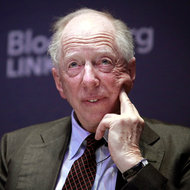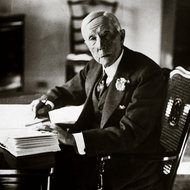Creating Value
Are you getting the most out of your business?
One morning in May 2004, Steve Ciepiela, co-owner of a financial planning and wealth management firm, heard his phone ring while he was in his garage. It was the office manager. She told Mr. Ciepiela that his partner in the firm, Charles Stephens Company, had just had a brain aneurysm and was in critical condition. Within 24 hours, he had died.
It’s the kind of phone call no one wants to get, but it can be especially difficult for a partner in a small company. How is the company going to fulfill the promises made to its customers? Who is going to take over the responsibilities of the departed owner? How will the customers view the company now that one of the founders is gone?
These are all real questions that customers, employees and suppliers inevitably ask. If you don’t have good answers and haven’t done some disaster planning about what the company will do, there is a good chance your outcome will not be happy.
Fortunately Mr. Ciepiela and his partner had prepared. They took the advice that they had been giving clients for years.
First, they had a buy/sell agreement in place that spelled out what would happen if either of the partners died or became disabled. It also spelled out how the business would be valued, who would own the stock and how the stock would be bought from the estate of the deceased partner. Most importantly, they bought life insurance, which eventually provided the funds for Mr. Ciepiela to use in buying out his partner and re-organizing the business.
The agreement prevented Mr. Ciepiela from having to negotiate with his partner’s family. And it provided a clear framework that allowed him to avoid having to be in business with his partner’s spouse. Mr. Ciepiela and his partner had decided that they had gone into business with each other — and not with each other’s spouses — and they wanted to keep it that way. When disaster struck, this allowed Mr. Ciepiela to focus on the issues that would be critical to keeping the company running.
If you decide to set up such an agreement, you will want to have your accountant, attorney and financial adviser participate in helping craft one that’s right for you. If you have partners, such an agreement isn’t just important — it’s crucial. And it’s especially important if, as with a financial services company, the partners have adviser-based relationships with clients. Any time those relationships have to be transferred, especially under traumatic circumstances, the business is at risk.
Fortunately, Charles Stephens had standardized procedures and processes. When Mr. Ciepiela’s partner died, the clients didn’t have to learn a whole new style of service, because the systems and procedures were established and in place. There was no rush of customers to the doors. Ultimately, the real lesson here is the importance of branding your company and having systems in place so that clients are customers of the company and not of an individual.
Of course, problems did appear along the way. Mr. Ciepiela realized that he couldn’t do the work of two people. He spent much of the first year after his partner’s death reorganizing the company. He sold off parts that his partner had handled and that he didn’t feel were essential to the success of the company. That freed him to concentrate on the areas that he did consider essential.
One of the changes he made was to segment customers. He decided that he would deal with the largest and most profitable customers while his staff picked up the smaller ones. This model enforced discipline that hadn’t been in place previously. The new discipline required the firm to develop different service packages for different types of customers.
Not surprisingly, the business did suffer a decline in revenue after selling off parts of the company. But the restructuring helped it regain the lost revenue within two years. Mr. Ciepiela credits this rebound to focus, to learning how to say yes to the right customer and no to those who don’t fit.
Today, the company is highly successful, and Mr. Ciepiela is facing his next dilemma. What will happen to the firm after he decides to retire? He is 60, and it’s time for him to start thinking about the next generation of owners — a new and different dilemma than he faced when the phone rang in 2004.
What have you done to protect your business from disaster? Have you learned the lessons Mr. Ciepiela learned?
Josh Patrick is a founder and principal at Stage 2 Planning Partners, where he works with private business owners on creating personal and business value.
Article source: http://boss.blogs.nytimes.com/2013/02/21/one-phone-call-from-disaster/?partner=rss&emc=rss


